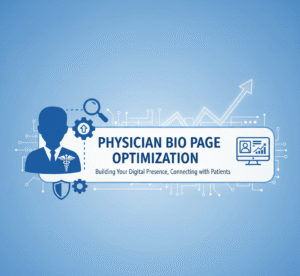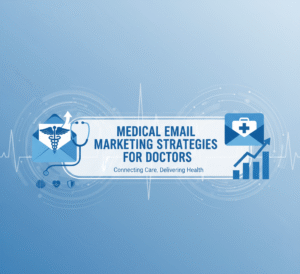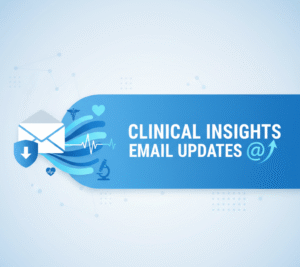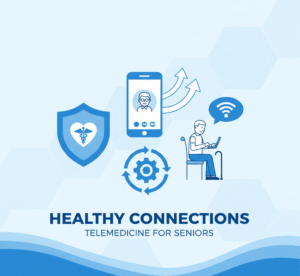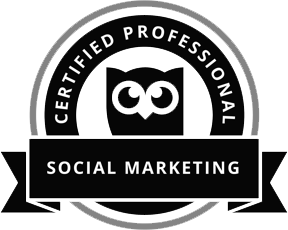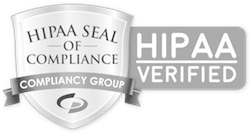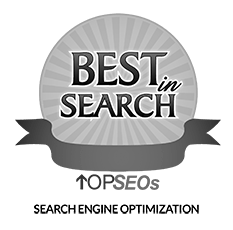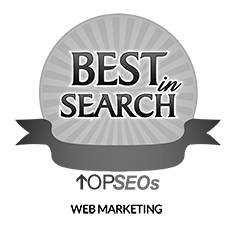“Bring your medical device to marketing with this guide on regulatory pathways, digital marketing (SEO, PPC, LinkedIn), clinical study promotion, and provider outreach, emphasizing trust and clinical benefits for successful launches.”
Bringing a new medical device to market involves innovation, rigorous testing, and significant regulatory hurdles. Yet, even the most groundbreaking technology won’t succeed if it doesn’t effectively reach its intended audience—healthcare providers, patients, and procurement teams. This process demands more than a great product; it requires a meticulously planned and executed marketing strategy.
In the competitive landscape of medical technology, companies must guide their products through a complex ecosystem. This includes proving clinical efficacy, building unwavering trust, clearly explaining intricate clinical benefits, and engaging with healthcare professionals where they seek information. A robust digital marketing approach, encompassing search engine optimization (SEO), pay-per-click (PPC) advertising, and strategic LinkedIn engagement, stands as a critical pillar for success.
This article provides a detailed guide for medical device companies navigating the essential steps of launching a new product. We will cover everything from understanding the intricate regulatory landscape to developing compelling messaging, creating educational content, and building effective marketing funnels. We focus on practical, actionable strategies that help your device gain traction in a crowded market.
Understanding the Device Regulatory Pathway: The Foundation of Market Entry
Understanding and adhering to the device regulatory pathway is paramount before marketing efforts can take shape. This isn’t just a compliance formality; it shapes your messaging, claims, and overall go-to-market timeline. The regulatory process, particularly in markets like the United States with the FDA, is designed to ensure device safety and effectiveness.
Navigating FDA Regulations in the United States
The U.S. Food and Drug Administration (FDA) provides comprehensive guidance for studying and marketing medical devices. The journey begins with classifying your device based on its risk potential. Devices fall into one of three classes (I, II, or III), which determines the level of regulatory control and the specific submission type required. These classifications are governed by the Federal Food, Drug, and Cosmetic Act (FD&C Act) and Title 21 of the Code of Federal Regulations (21 CFR).
Common marketing pathways include:
- Premarket Notification (510(k)): Required for most Class II and some Class I devices. This submission demonstrates that your device is “substantially equivalent” to a legally marketed predicate device. This pathway often applies when a new device has similar technology and intended use as an existing product.
- Premarket Approval (PMA): This is the most stringent pathway, typically required for high-risk Class III devices. A PMA demands valid scientific evidence proving the device’s safety and effectiveness, often involving extensive clinical trials.
- De Novo Classification Request: For novel, low-to-moderate risk devices that do not have a legally marketed predicate. If a device cannot be classified through the 510(k) process, it may be eligible for De Novo classification.
- Humanitarian Use Exemption (HDE): This pathway is for Class III devices intended to treat or diagnose diseases or conditions affecting fewer than 8,000 people in the U.S. per year. It requires a Humanitarian Use Device (HUD) designation.
- Exempt: Some low-risk Class I and a few Class II devices are exempt from premarket notification requirements.
Preparing a premarket submission involves several critical elements:
- Design Controls: Essential for Class II and III devices, these controls ensure the design process is well-managed and documented to produce a safe and effective device.
- Nonclinical Testing: This includes bench testing and animal studies, which must often comply with Good Laboratory Practices (GLPs).
- FDA-Recognized Consensus Standards: Utilizing these standards can streamline the review process by demonstrating adherence to established safety and performance benchmarks.
- Clinical Evidence: Clinical trials are necessary for PMAs, HDEs, and some 510(k)s and De Novo requests. These trials require an Investigational New Drug (IDE) from the FDA, approval from an Institutional Review Board (IRB), and adherence to Good Clinical Practices (GCPs).
- Labeling: All device labeling must meet regulatory requirements and clearly outline intended use, warnings, and instructions.
- Unique Device Identification (UDI): A system phased in by the FDA to improve device identification and postmarket surveillance.
After submission, the FDA conducts an administrative review, followed by an interactive review in which the agency communicates with the applicant for clarification. User fees apply to specific applications, though programs like the Small Business Determination (SBD) can offer reductions.
Postmarket requirements are also crucial. These include establishment registration and device listing with the FDA, manufacturing by current Good Manufacturing Practices (GMPs), and ensuring devices are not adulterated or misbranded. It is important to remember that registration or listing does not imply FDA clearance or approval.
Quality Management Systems: A Cornerstone of Compliance
A robust Quality Management System (QMS), ideally compliant with ISO 13485, is fundamental throughout the entire device lifecycle. This system ensures consistent product quality, adherence to regulations, and efficient management of processes from design and development to production and post-market activities. A well-implemented QMS meets regulatory demands and fosters a quality culture that builds stakeholders’ confidence.
Crafting Your Medtech Go-to-Market Strategy: Beyond Regulation
With regulatory pathways understood, your medtech go-to-market strategy comes into sharper focus. This comprehensive plan guides your product from development to market launch and beyond. It involves meticulous planning and coordination across various departments, from R&D to sales and marketing.
Building a Strong Business Case
The initial phase involves building a robust business case. This begins with ideation, identifying unmet market needs, and conducting thorough market research to understand the competitive landscape. Detailed project timelines and cost estimations are vital to ensure continuous capital availability and prevent delays. Revenue research helps project financial viability and potential market share. Creating prototypes early allows for feasibility studies and troubleshooting, refining the device before a significant investment.
Core Components of a Go-to-Market Plan
A successful go-to-market plan for a medical device integrates several key elements:
- Securing Funding: Adequate capital is essential for research, development, regulatory submissions, and initial marketing efforts.
- Assembling Your Team: Navigating the complexities of the medical device industry requires a multidisciplinary team with expertise in engineering, regulatory affairs, clinical research, and marketing.
- Product Development with Design Controls: This phase focuses on refining the device’s design, implementing risk management strategies, and establishing strong supplier and partner networks.
- Distribution Strategy: Identify how your product will reach end-users. This could involve direct sales, distributors, or a combination. The chosen channels must align with your target audience and market structure.
- Reimbursement Strategy: Securing reimbursement from payers is as essential as regulatory approval for many medical devices. This requires understanding coding, coverage, and payment policies relevant to your device and target procedures.
Product Launch Activities
The product launch phase requires careful execution:
- Design Transfer: Successfully transferring the design from development to manufacturing, ensuring consistent production of high-quality devices.
- Developing Marketing Materials: Creating compelling collateral communicates your device’s value proposition, clinical benefits, and technical specifications. These materials must be accurate and compliant with regulatory guidelines.
- Product Registration: In addition to initial market authorization, ensure all necessary global product registrations are in place for target markets.
- Internal Launch: Energize and educate your internal teams, including sales representatives, service technicians, and customer support, about the new device. Provide comprehensive training, sales guides, and quick-reference materials.
- Distribution Network Briefing: Inform and train your network of medical device dealers and distributors, providing them with promotional and support materials that highlight the new medical device’s benefits.
- Support Infrastructure: Confirm that a robust support infrastructure is in place, including spare parts availability and a help desk to manage inquiries and requests during the initial launch.
Post-Launch Considerations
The work continues long after launch. Post-market surveillance is crucial for monitoring real-world device performance and gathering feedback. Managing quality events, maintaining your QMS, and adapting to evolving regulatory changes are continuous responsibilities. Market approval is merely the beginning of an ongoing commitment to safety, compliance, and continuous improvement.
Medical Device Positioning: Defining Your Place in the Market
Effective medical device positioning defines how your target audience perceives your product relative to competitors. It’s about articulating your unique value that resonates with healthcare professionals and patients’ needs and challenges.
Developing Your Device Value Proposition
Your device value proposition is your core promise to potential customers. It answers the question: “Why should they choose your device over alternatives?” A strong value proposition communicates:
- The problem your device solves: What specific clinical challenge or unmet need does it address?
- The specific benefits it offers: How does it improve patient outcomes, enhance efficiency, reduce costs, or provide a better experience? Focus on quantifiable results and real-world impact.
- What makes it unique: Highlight your key differentiators—advanced technology, superior efficacy, ease of use, or exceptional support.
For example, instead of saying “Our device has advanced imaging capabilities,” a stronger value proposition might be: “Our imaging device provides unparalleled clarity, enabling earlier and more accurate diagnoses, which leads to improved patient pathways and reduced healthcare costs.”
Competitive Analysis
To position your device effectively, you must understand your competitors. Analyze their products, marketing messages, strengths, and weaknesses. Identify gaps in the market that they are not addressing and opportunities where your device can offer a superior solution. This analysis informs your messaging, allowing you to highlight aspects where your device truly stands out.
Digital Marketing for Medical Devices: Reaching Your Audience Online
In today’s digital age, a comprehensive digital marketing strategy is indispensable for medical device companies. Healthcare professionals increasingly use online channels for information, research, and purchasing decisions. This is where expertise in SEO, PPC, and strategic content creation becomes vital.
SEO Strategies for Medical Device Marketing
Medical device SEO (Search Engine Optimization) involves optimizing your website and online content to rank higher in search engine results for relevant keywords. The goal is to drive organic traffic—unpaid visitors actively searching for solutions your device provides. SEO is crucial for medical devices due to their long sales cycles and the need to establish credibility and authority.
Key components of a robust medical device SEO strategy include:
- Thorough Keyword Research: Identify the terms and phrases healthcare professionals, procurement teams, and even patients use when searching for information related to your device, conditions it treats, or procedures it supports. Focus on long-tail keywords (e.g., “best portable ultrasound for rural clinics”) as they often indicate higher intent.
- On-Page SEO Optimization:
- Content Creation: Develop high-quality, informative, and regulatory-compliant content that addresses the needs and questions of your target audience. This includes product pages, educational blog posts, white papers, case studies, and clinical research summaries. Ensure content is accurate and evidence-based, building trust and positioning your brand as an expert. Use structured headings, simplified explanations where appropriate, and clear formatting.
- Meta Titles and Descriptions: Craft compelling and keyword-rich meta titles and descriptions for each page. These appear in search results and influence click-through rates.
- Image Optimization: Optimize images with descriptive alt text and appropriate file sizes for faster loading.
- Internal Linking: Strategically link relevant pages within your website to improve navigation, distribute link authority, and help search engines understand your site’s structure.
- Technical SEO Excellence:
- Site Speed and Mobile Responsiveness: Ensure your website loads quickly on all devices, especially mobile, as many professionals access information on the go.
- Secure Browse (HTTPS): An SSL certificate is crucial for security and a ranking factor for search engines.
- Crawlability and Indexability: Ensure search engines can easily access and index your site’s content.
- Structured Data Markup (Schema): Implement schema markup to give search engines more context about your content, such as product details, certifications, and clinical studies. This can lead to richer search results (e.g., star ratings, FAQs).
- Off-Page SEO (Link Building): Build authority and credibility through external signals, primarily backlinks from reputable and authoritative sources. This means securing links from medical journals, regulatory bodies, healthcare organizations, and industry associations for medical devices. This demonstrates to search engines that your site is a trusted resource.
- Local SEO: If your device has a regional focus or is distributed through local channels, optimize your Google Business Profile listing and ensure consistent local citations across directories. This helps attract healthcare providers searching for solutions in specific geographic areas.
- Compliance with YMYL Guidelines: Google categorizes medical content under its “Your Money, Your Life” (YMYL) guidelines, holding this information to higher standards of accuracy, trustworthiness, and expertise. Your SEO strategy must reflect this, featuring authoritativeness (E-E-A-T: Experience, Expertise, Authoritativeness, Trustworthiness) in your content and across your site.
PPC Advertising for Targeted Reach
Medical device PPC (Pay-Per-Click) advertising allows you to instantly gain visibility on search engines and other platforms by bidding on keywords. Unlike SEO, which builds organic visibility over time, PPC provides immediate, targeted reach. This is especially effective for reaching decision-makers actively searching for specific medical solutions.
Key strategies for effective medical device PPC campaigns include:
- Hyper-Targeted Keyword Selection: Focus on high-intent, specific keywords that indicate a clear need for your device. For example, instead of “ultrasound,” use “portable ultrasound machine for cardiology.”
- Audience Segmentation: Target specific medical specialties, geographic locations, and healthcare providers’ purchasing behaviors. PPC platforms offer advanced targeting options, including demographic, interest, and intent-based targeting.
- Compelling Ad Copy: Craft clear, concise, and persuasive ad copy highlighting your device’s unique value proposition and addressing specific pain points. Include certifications (e.g., FDA clearance, CE Mark) to build trust.
- Optimized Landing Pages: Direct ad clicks to highly relevant, optimized landing pages that seamlessly continue the message from the ad. These pages should have clear calls-to-action (CTAs), such as “Request a Demo,” “Download Clinical Data,” or “Contact Sales.”
- Remarketing Campaigns: Use remarketing to re-engage with prospects who have previously visited your website but did not convert. Show them dynamic ads featuring the exact equipment they viewed, emphasizing demos or financing options. This keeps your device top-of-mind during long buying cycles.
- Ad Extensions: Utilize ad extensions (e.g., call extensions, structured snippets, site link extensions) to provide more information and improve ad visibility.
- Budget Management and Bid Strategy: Carefully manage your PPC budget, optimizing bids based on keyword performance, time of day (e.g., increase bids during business hours when decision-makers are active), and device type.
- A/B Testing: Continuously test different ad variations (headlines, descriptions, CTAs, images) to identify what resonates best with your target audience and improves performance.
- Social Media Ads: Beyond search engines, leverage social media platforms like LinkedIn (discussed next) for targeted ads to reach healthcare professionals and decision-makers in their preferred online environments. YouTube ads with product demos or testimonials can also be highly effective.
- Offline Conversion Tracking: For high-value medical device sales that close offline after demos or extended negotiations, implement offline conversion tracking to attribute final sales to initial PPC clicks. This provides a more accurate ROI measurement.
Leveraging LinkedIn for B2B Med Device Content and Connections
LinkedIn is the premier platform for B2B med device content and professional networking. It offers unique opportunities to engage with healthcare professionals (HCPs), hospital administrators, procurement teams, and key opinion leaders (KOLs).
Strategies for effective LinkedIn marketing include:
- Company Page Optimization: Maintain a professional and informative company page, regularly updating it with news, product launches, clinical data, and thought leadership content.
- Content Sharing: Share valuable and engaging content that educates your audience. This can include:
- Case Studies and Clinical Trial Results: Provide evidence-based insights into your device’s efficacy and real-world impact.
- Webinars and Product Demos: Promote live and on-demand webinars showcasing your device’s features and benefits—Repurpose webinar recordings into shorter video snippets or blog posts.
- Industry News and Insights: Share relevant industry trends, regulatory updates, and expert analyses to position your company as a knowledgeable leader.
- Patient Testimonials (with consent): Humanize your brand by sharing stories of how your device has positively impacted patients’ lives.
- Engaging in Industry Groups: Join relevant LinkedIn groups where healthcare professionals discuss industry challenges, new technologies, and clinical practices. Participate in discussions, answer questions, and share insights to build credibility and establish connections.
- Connecting with KOLs and Influencers: Identify and connect with key opinion leaders in your specialty. Collaborating with KOLs for endorsements, joint webinars, or content creation can significantly boost your device’s credibility and reach.
- LinkedIn Ads: Utilize LinkedIn’s robust advertising platform for highly targeted campaigns. You can target audiences by job title, industry, company size, and professional interests, ensuring your message reaches the right decision-makers.
- Employee Advocacy: Encourage your employees to share company updates and relevant content on their personal LinkedIn profiles. This will expand your reach and leverage the power of individual networks.
- Showcasing Your Team: Highlight your team members’ expertise and dedication. This builds trust and shows the human side of your company.
Med Device Clinical Study Marketing: Translating Science into Solutions
Med device clinical study marketing focuses on effectively communicating the results and implications of your clinical research. This is crucial for building trust, providing evidence of efficacy, and convincing healthcare providers of your device’s value.
Strategies for Clinical Study Marketing:
- Create Accessible Summaries: Translate complex clinical data into clear, concise, and easy-to-understand summaries. Use infographics, short videos, and executive summaries to make the information digestible for busy professionals.
- Develop White Papers and Case Studies: Produce detailed white papers that delve into the scientific rigor of your studies. Complement these with real-world case studies showcasing successful patient outcomes and practical applications of your device. These can serve as valuable gated content for lead generation.
- Present at Conferences and Trade Shows: Leverage industry events to present your clinical findings, conduct live demonstrations, and engage directly with potential users and buyers. (More on trade shows below).
- Publish in Peer-Reviewed Journals: Seek publication of your clinical study results in reputable peer-reviewed medical journals. This provides a strong foundation of scientific credibility.
- Webinars and Thought Leadership: Host webinars featuring your clinical experts or KOLs discussing study methodologies, results, and implications. Position your company as a thought leader committed to evidence-based innovation.
- Integrate into Sales Enablement Materials: Ensure your sales team can access compelling clinical evidence, case studies, and visual aids to support their discussions with healthcare providers.
- Testimonials and Endorsements: Secure testimonials from clinicians who have participated in your studies or used your device with positive results. Authentic endorsements from respected professionals carry significant weight.
Healthcare Provider Outreach: Building Relationships and Trust
Effective healthcare provider outreach is about building genuine relationships and establishing trust. HCPs are critical gatekeepers and decision-makers in the adoption of new medical technologies.
Strategies for Engaging HCPs:
- Educational Content: Provide valuable, unbiased educational content that addresses their challenges and enhances their practice. This moves beyond product features to focus on clinical insights and solutions.
- Personalized Engagement: Understand the specific needs and interests of different healthcare specialties. Tailor your communication and content to resonate with their particular areas of practice.
- Medical Science Liaisons (MSLs): MSLs play a crucial role in scientific exchange with KOLs and other healthcare professionals. They provide in-depth scientific and clinical information, fostering trust and education.
- Peer-to-Peer Engagement: Facilitate opportunities for HCPs to learn from their peers who are successfully using your device. This can be through webinars, professional forums, or peer-led demonstrations.
- Advisory Boards: Form advisory boards with influential clinicians to gather insights, refine your product, and gain early adoption from thought leaders.
- Demonstrations and Training: Offer hands-on demonstrations and comprehensive training programs to ensure HCPs use your device comfortably and proficiently. This reduces barriers to adoption.
- Exceptional Customer Service: Provide responsive and proactive support to address inquiries or challenges. Positive customer experiences build loyalty and advocacy.
Medtech Trade Show Promotion: Maximizing Event Impact
While digital channels are powerful, medtech trade show promotion remains vital to medical device marketing. These events offer unparalleled face-to-face interaction, networking, and product demonstrations.
Making the Most of Trade Shows:
- Pre-Show Promotion: Build anticipation for your presence. Announce your participation on social media (especially LinkedIn), send email invitations to your network, and highlight any special demonstrations, presentations, or guest speakers you will feature.
- Engaging Booth Design: Create an interactive and inviting booth for hands-on demonstrations. Ensure your branding is consistent and your messaging is clear, emphasizing your unique value proposition.
- Skilled Booth Staff: Train your sales and marketing teams on product knowledge, lead qualification, and effective engagement techniques. They should be able to articulate complex information clearly and confidently.
- Lead Capture Strategies: Use digital lead capture apps to collect contact information and qualify leads efficiently. Follow up promptly after the show.
- Live Demonstrations and Presentations: Conduct regular live product demonstrations and short presentations at your booth. This will draw in visitors and allow them to see your device in action.
- Networking: Encourage your team to actively network with attendees, potential partners, and industry influencers.
- Post-Show Follow-Up: Develop a robust post-show follow-up plan to nurture leads generated at the event—Personalize outreach based on interactions at the booth.
Device Launch PR Campaigns: Generating Buzz and Credibility
Device launch PR campaigns are essential for generating media interest, building brand awareness, and establishing credibility in the medical community. A strategic PR approach can break through the noise and position your device as a significant advancement.
Key Elements of PR for Medical Device Launches:
- Develop a Compelling Story: Medical device PR is not just about announcing a product; it’s about telling a compelling story. Focus on the human impact: the problem it solves, the patients it helps, and the clinical advancements it represents.
- Targeted Media Outreach: Identify key healthcare trade publications, medical journals, industry news outlets, and relevant general media. Tailor your pitches to align with their editorial focus and audience interests.
- Press Releases: Craft newsworthy press releases announcing regulatory approvals, clinical trial milestones, product launches, or significant partnerships.
- Thought Leadership Articles: Secure opportunities for your company’s executives or clinical experts to author thought leadership articles in influential industry publications. This positions your company as an authority.
- Key Opinion Leader (KOL) Engagement: Partner with respected KOLs to provide quotes and testimonials or participate in media interviews. Their endorsement carries significant weight.
- Visual Assets: Provide high-quality visual assets to media, including product images, videos of the device in use, infographics explaining complex mechanisms, and relevant charts or graphs from clinical studies.
- Media Briefings and Demos: Offer exclusive briefings and demonstrations to key journalists, allowing them to experience the device firsthand and ask detailed questions.
- Conferences and Events: Leverage your presence at major medical conferences as opportunities for media interviews and announcements.
- Online Newsrooms: Maintain an online newsroom on your website with all press releases, media kits, contact information, and downloadable assets.
- Crisis Communication Plan: Have a plan in place to address any potential negative publicity or product-related issues swiftly and transparently.
B2B Med Device Content: Educating and Engaging Decision-Makers
B2B med device content is fundamental to educating and engaging your target audience throughout their purchasing journey. This content must be informative, credible, and tailored to the specific needs of healthcare professionals and institutional buyers.
Types of B2B Medical Device Content:
- White Papers and E-books: In-depth resources that address complex clinical problems or industry trends, offering solutions and insights where your device plays a role. These often serve as gated content for lead generation.
- Case Studies: Detailed accounts of how your device has successfully solved a specific problem for a healthcare institution or patient. Include quantifiable results and quotes from users.
- Clinical Data Summaries and Infographics: Present complex clinical trial results in an easy-to-understand visual format.
- Educational Blog Posts: Regular blog content that covers relevant topics, industry news, best practices, and answers common questions from HCPs.
- Webinars and Video Content: Educational webinars featuring experts, product demonstrations, surgical procedure videos (where applicable), and patient stories. Video is highly engaging and can simplify complex information.
- Product Spec Sheets and Brochures: Detailed technical information for procurement teams and clinicians needing precise specifications.
- FAQs and Knowledge Bases: Comprehensive resources addressing frequently asked questions about your device, its use, maintenance, and clinical benefits.
- Testimonials and Expert Interviews: Quotes and video interviews from clinicians, hospital administrators, or patients who have experienced positive outcomes with your device.
Ensure content is factual, evidence-based, and compliant with all relevant regulations, including HIPAA for patient data privacy. Focus on providing value and building trust, rather than aggressive sales pitches.
Measuring Success and Adapting Your Strategy
Successful medical device marketing involves ongoing measurement, analysis, and adaptation. You must track key performance indicators (KPIs) to understand what’s working and identify areas for improvement.
Key Metrics to Monitor:
- Website Traffic and Engagement: Monitor organic and paid traffic, bounce rates, time on page, and conversion rates for key actions (e.g., demo requests, content downloads).
- Lead Generation: Track the number of qualified leads generated from various channels (SEO, PPC, LinkedIn, events) and their conversion rates through the sales funnel.
- Search Engine Rankings: Monitor your ranking for target keywords to assess SEO performance.
- PPC Performance: Track impressions, clicks, click-through rates (CTR), cost-per-click (CPC), and return on ad spend (ROAS).
- Social Media Engagement: Monitor likes, shares, comments, and follower growth on platforms like LinkedIn.
- Media Mentions and Coverage: Track PR outcomes, including the quantity and quality of media coverage.
- Sales Conversion Rates: Ultimately, connect marketing efforts to sales outcomes.
- Customer Feedback: Gather feedback from early adopters and key opinion leaders to refine your messaging and product.
Regularly review your data, identify trends, and be prepared to adjust your strategies. The medical device market is dynamic, with evolving technologies, regulations, and patient needs, so agility is crucial.
Partnering for Success: Invigo Media’s Expertise in Digital Marketing
Launching a medical device into competitive markets requires specialized expertise. Navigating the complex regulatory environment while developing and executing a sophisticated digital marketing strategy is monumental. This is where a strategic partner like Invigo Media can make a significant difference.
Invigo Media understands the unique challenges and opportunities within the medical device sector. Our team possesses deep expertise in digital marketing, especially SEO and PPC, tailored specifically for the medtech industry. We work closely with medical device companies to:
- Develop Compliance-Driven Messaging: Craft compelling marketing messages highlighting your device’s benefits and adhering to stringent regulatory guidelines.
- Create Educational Content Strategies: Design content plans that educate healthcare providers and patients, building trust and positioning your device as a leading solution.
- Optimize Marketing Funnels: Develop and refine marketing funnels that effectively guide prospects from initial awareness through consideration, conversion, and ultimately, adoption.
- Implement Advanced SEO Tactics: Drive organic visibility by optimizing your website for relevant medical keywords, ensuring your device appears prominently when HCPs are searching for solutions.
- Execute High-Impact PPC Campaigns: Develop targeted PPC campaigns that reach decision-makers precisely when actively seeking medical devices, maximizing your return on investment.
- Leverage LinkedIn for Strategic Outreach: Through tailored LinkedIn strategies and content, build strong B2B connections and foster engagement with key stakeholders.
By partnering with Invigo Media, medical device companies gain a dedicated team adept at translating complex medical innovations into clear, persuasive, and compliant marketing narratives. We help you cut through the noise, build credibility, and accelerate your path to market success.
Conclusion
Bringing a medical device to market is a rigorous, multi-faceted undertaking that extends far beyond regulatory approval. It demands a strategic, informed, and agile marketing approach that builds trust, educates key stakeholders, and effectively communicates your device’s transformative potential. From meticulously navigating the device regulatory pathway to executing sophisticated medtech go-to-market strategies, every step must be deliberate and coordinated.
Digital marketing, with its powerful tools like SEO for sustained visibility and PPC for precision targeting, plays an indispensable role. Leveraging platforms like LinkedIn for B2B med device content and healthcare provider outreach allows for direct engagement with crucial decision-makers. Effective med device clinical study marketing and well-executed device launch PR campaigns further solidify your credibility and generate essential market buzz.
The journey is complex, but your innovative medical device can achieve significant market penetration and profoundly impact patient care with the right strategy and a strong partner. Consider collaborating with experts like Invigo Media, who specialize in digital marketing for the medical device sector, to ensure your groundbreaking technology receives the attention and adoption it deserves. By embracing a comprehensive and digitally-driven marketing framework, your medical device can enter and thrive within the market, delivering on its promise to improve lives.
Frequently Asked Questions (FAQs)
Q1: How important is regulatory compliance in medical device marketing?
A1: Regulatory compliance is critical. It dictates what claims you can make, how you can position your device, and the overall timeline for market entry. Without proper regulatory clearance, you cannot legally market your device. Furthermore, compliance builds trust with healthcare professionals and patients, who rely on devices that meet high safety and efficacy standards.
Q2: Given privacy concerns, can I use social media for medical device marketing?
A2: Yes, you can and should use social media, especially professional platforms like LinkedIn, for medical device marketing. However, it requires careful navigation. You must always adhere to patient privacy regulations (like HIPAA) and avoid making unsubstantiated claims. Focus on sharing educational content, clinical evidence, industry insights, and company news. Engagement should be professional and informative, not personal or speculative.
Q3: How long does bringing a medical device to market typically take?
A3: The timeline varies significantly depending on the device’s class, complexity, and the regulatory pathway. It can range from less than a year for simple Class I devices to several years (5-10+) for complex Class III devices requiring extensive clinical trials and PMA approval. Marketing efforts should begin each development process, strategically aligning with regulatory milestones.
Q4: What is the most effective digital marketing channel for medical devices?
A4: No single “most effective” channel; an integrated, multi-channel approach typically yields the best results. SEO is crucial for long-term organic visibility and credibility for medical devices, while PPC offers immediate, targeted reach. LinkedIn is indispensable for B2B engagement and thought leadership. Combining these with content marketing, email nurturing, and PR creates a powerful strategy.
Q5: How can a medical device company build trust with healthcare providers?
A5: Building trust requires a multi-faceted approach. Focus on evidence-based marketing by providing robust clinical data and case studies. Emphasize regulatory compliance and quality. Engage with key opinion leaders and leverage peer testimonials. Offer exceptional customer support and provide valuable, unbiased educational content that addresses their clinical needs. Transparency and consistent, reliable performance are key.
Q6: Should I prioritize SEO or PPC for my medical device launch?
A6: Both SEO and PPC play distinct but complementary roles. For a launch, PPC can provide immediate visibility and drive targeted traffic quickly, allowing you to generate leads while your organic presence builds. SEO is a long-term investment that builds sustainable organic traffic, authority, and credibility. Ideally, you should implement both, using PPC for quick impact and SEO for sustained growth.
Q7: How do I differentiate my medical device in a crowded market?
A7: Differentiation begins with a clear and compelling value proposition. Focus on what truly sets your device apart: superior clinical outcomes, unique technology, enhanced user experience, cost-effectiveness, or improved patient safety. Highlight these distinct benefits consistently across all your marketing channels. Back your claims with robust clinical evidence and real-world success stories.


